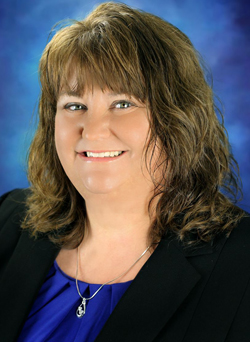July 7, 2022
 Stephanie Filter has served as the principal of Madison Elementary in the School District of Janesville for the past eight years and is the 2022 Wisconsin Elementary Principal of the Year.
Stephanie Filter has served as the principal of Madison Elementary in the School District of Janesville for the past eight years and is the 2022 Wisconsin Elementary Principal of the Year.
I feel like I am living the ultimate dream of every child: being the principal of their elementary school.
When I attended Madison several years ago, it was in a middle-class neighborhood and continued to be that until 20 years ago. Slowly, the neighborhood changed, and poverty increased, changing the dynamic and needs.
I had the privilege of being the school social worker at Madison for seven years before becoming principal. Having a Student Services background helped me to collaborate with staff to address the changing needs. We accomplished this through three main initiatives: responding to student needs, supporting staff and ensuring our students are achieving.
Responding to Students’ Needs
Staff were seeking professional development that would help them understand and respond to students in poverty. Our leadership team introduced staff to Eric Jensen’s “Teaching with Poverty in Mind” and wrote a grant to take staff to be trained. Then the trained staff provided professional development and resources to remaining staff.
Along with poverty, the trauma our families and students were experiencing also increased – another area our staff needed additional resources and support to meet the changing needs. We identified that our students needed support with their executive functioning, so the leadership team researched programs that would assist and took a team of staff to be trained in Stimulating Maturity through Accelerated Readiness Training.
We implemented it into classrooms and developed a resource room to provide breaks for students throughout the day using SMART. In my first years as principal, we had a large amount of discipline referrals that were taking a significant amount of my time and staff time, as well as increasing the stress of the classrooms and teachers. We worked to identify the root cause of the behavior and found that students were lacking the ability to identify feelings and appropriate responses.
We evaluated programs again and found the Zones of Regulation could be incorporated universally into our guidance program and in the existing Resource Room. Focusing on making students’ social emotional skills strong ensures they are ready for learning. Since implementing these strategies, our office discipline referrals have significantly decreased, resulting in a greater amount of time students are in class learning, and staff can work more effectively.
Supporting Staff
With the changes in demographics at Madison, stress also increased with staff. Our leadership team decided to become an Energy Bus-certified school and began by reading “The Energy Bus” by Jon Gordon together. The next year, all staff received training through the Energy Bus for Schools initiative.
From there, we implemented the seven principles into our guidance instruction for students and developed an Energy Ambassador team to build staff morale and positive energy. In the most recent results of the 2020-2021 Wisconsin Educator Development, Support and Retention Survey, Madison School outscored the state in the following questions:
- I find real enjoyment in my job: Madison 36% strongly agree vs. state 31%.
- I like my job better than the average person: Madison 36% strongly agree vs. state 29%.
- Most days I am enthusiastic about my job: Madison 36% strongly agree vs. state 29%.
- I feel fairly well satisfied with my job: Madison 44% strongly agree vs. state 27%.
Ensuring Students Are Achieving
With culture improving, the leadership team looked at what we could do to increase student achievement and found that teacher efficacy had the highest impact on student achievement, according to researcher John Hattie.
We began to focus on building a Professional Learning Community culture at Madison. Leadership team members were trained and worked with staff to develop collaborative teams focusing on the four main questions of a PLC.
As a staff, we also rewrote our mission statement collaboratively and teach it weekly to our students so we all know and commit to our purpose. We were identified as a Title I School of Recognition in 2019-2020. Based on STAR scores, our overall student growth percentile for 21-22 school year in math was 46, and reading was 51 (40 is a typical year’s growth). Our state report card overall score for last year was 61.7 (meeting expectations).
Each year, we develop a school improvement plan using data and input from all staff and parents with three goals that are reviewed and evaluated at the district level. This helps us focus on the many aspects of student achievement.
Students’ needs are ever changing, and the pandemic has introduced new stressors and needs, but at Madison, we have developed a culture of positive problem solving and looking for solutions that will continue our mission.